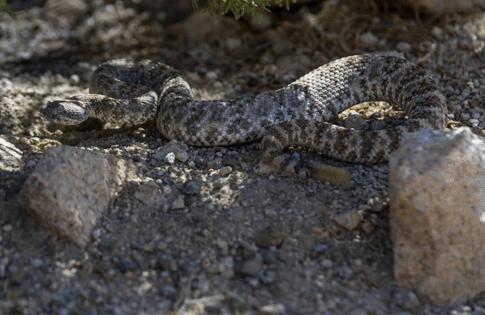It's rattlesnake season. Here's how to dodge the venomous creature
Published in Science & Technology News
LAS VEGAS — It’s the sound a hiker never wants to hear.
The sizzling warning call of a rattlesnake should be any outdoorsman’s sign to flee. Rattlesnake season, when Nevadans may see one of the state’s six species during the day or at night, begins each March as the Las Vegas Valley gets warmer. The snakes are most active through October.
State wildlife officials say the venomous snakes are able to lunge out as far as two-thirds of their body length to bite at high speeds. Rattlesnakes may not even use their rattle before they bite, and young ones are capable of spreading venom, as well.
OK, so what do I do?
The best approach if Nevadans come into contact with a rattlesnake is to leave it alone, according to the Nevada Department of Wildlife’s “ Living with Rattlesnakes” webpage.
Sometimes they are found in urban areas, especially near shaded yards, garages or covered patios where they can escape the heat. In the wild, rattlesnakes seek refuge from heat where they can, in burrows or slots in rocks.
While rattlesnakes may be frightening when they feel threatened, the animals are effective at eating rodents, including ones that may transmit hantavirus, plague and salmonella. The best way to prevent a bite is to give a snake space.
To keep them out of yards, state wildlife officials say so-called drift fences over 5 feet high and angled a certain way can deter them from climbing over. Keeping yards neat and preventing the buildup of bird feeders can be a solution, too.
And if Nevadans just want to know which snake they may have come across, consult the state’s guide to venomous snakes on the wildlife department’s website. If one ever makes it into a home, or a rattlesnake is posing a public safety threat, game wardens can be dispatched to Las Vegas neighborhoods by calling 911.
___
©2025 Las Vegas Review-Journal. Visit reviewjournal.com.. Distributed by Tribune Content Agency, LLC.







Comments